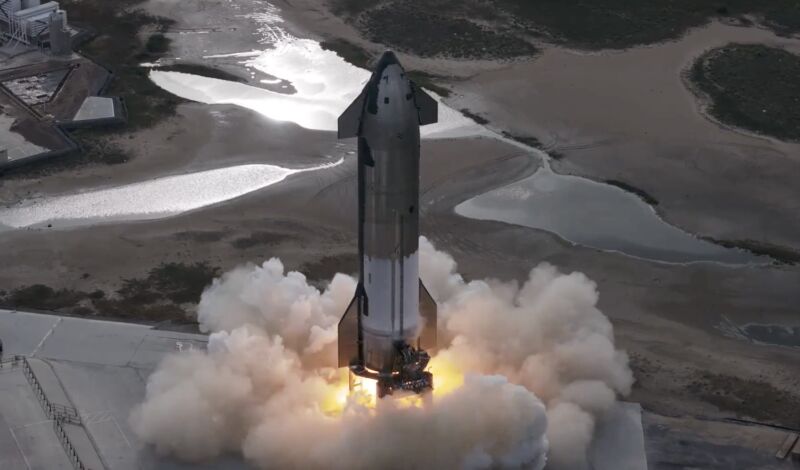
Enlarge / Ship 28, the Starship for SpaceX’s next full-scale test flight, fires up one of its engines on December 29 in Texas.
SpaceX
It’s no secret that Elon Musk has big ambitions for SpaceX’s Starship mega-rocket. This is the vehicle that, with plenty of permutations and upgrades, Musk says will ferry cargo and people across the Solar System to build a settlement on Mars, making humanity a multi-planetary species and achieving the billionaire’s long-standing dream.
Of course, that is a long way off. SpaceX is still working on getting Starship into orbit or close to it, an achievement that appears to be possible this year. Then, the company will start launching Starlink satellites on Starship missions while testing in-space refueling technology needed to turn Starship into a human-rated Moon lander for NASA.
SpaceX’s South Texas team is progressing toward the third full-scale Starship test flight. On December 20, the Starship’s upper stage slated for the next test flight completed a test-firing of its Raptor engines at the Starbase launch site on the Texas Gulf Coast. Nine days later, the 33-engine Super Heavy booster fired up on the launch pad for its own static fire test. On the same day, SpaceX hot-fired the Starship upper stage once again on a test stand next to the launch pad.
With those milestones complete, ground teams rolled the booster back to its hangar for final preflight checks and reconfigurations. The ship, too, will need to be rolled back to its high bay.
SpaceX could be weeks away from having both vehicles ready to fly, but the company hasn’t released an update on lessons learned from the previous Starship test flight in November. That flight was largely successful, with apparently flawless performance from the 33 engines on the Super Heavy booster during launch. The Starship upper stage reached space before self-destructing downrange over the Gulf of Mexico. The booster exploded during a maneuver to bring itself back to Earth for a controlled splashdown at sea.
The company’s engineers will want to understand and correct whatever caused those issues. The Federal Aviation Administration then needs to approve SpaceX’s investigation into the last Starship flight before issuing a new commercial launch license. When it flies again, Starship will try to reach near orbital velocity, enough speed to travel most of the way around the world before reentering the atmosphere near Hawaii.
Verifying the performance of Starship’s heat shield tiles during reentry will be valuable learning for SpaceX, but Starship first needs to be fully successful with a launch. This is just the start for the privately funded Starship program.